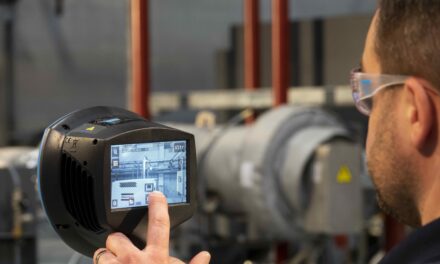As UK manufacturers begin to return to work following the turmoil caused by the human coronavirus (COVID-19) pandemic, General Manager at BOGE Compressors, Mark Whitmore, shares his top tips to ensure the smooth re-start of compressed-air systems.
 As the UK begins to emerge from lockdown and returns to work, many of us are experiencing trouble with our vehicles. Flat batteries, sticking brakes and ruined paintwork are all issues associated with cars that have been standing idle for months on end. Similarly, those parts of the manufacturing sector that have been shut down or have been running at low volumes are having teething troubles as they begin to re-start production.
As the UK begins to emerge from lockdown and returns to work, many of us are experiencing trouble with our vehicles. Flat batteries, sticking brakes and ruined paintwork are all issues associated with cars that have been standing idle for months on end. Similarly, those parts of the manufacturing sector that have been shut down or have been running at low volumes are having teething troubles as they begin to re-start production.
As most engineers will know, machinery is at its most reliable when it runs continuously and is maintained properly. Few machines, if any, will work well if they are shut down for lengthy periods of time. Restarting this machinery can often be a difficult process and, if handled incorrectly, can result in unexpected failures. This is especially true of compressors. Extended periods of inactivity can cause a number of issues that, if left unchecked, can seriously compromise the performance of these vitally important machines.
If you are about to reopen your facility after an extended break, there are a number of checks you should carry-out on your compressed-air system before starting it back up.
Initial checks
The first step in returning your compressed air plant to operation will always be a simple visual check to ensure that the equipment is intact and free of obstructions. Equipment must be isolated from all sources of power prior to starting these checks.
Check for oil leaks
During extended periods of shut down, there is an increased risk of oil leaks developing. When hoses and fittings cool down, they can become brittle and when the machine restarts, they can then fracture. A visual check of the compressed air system should quickly flag-up the presence of oil where it should not be, thereby confirming that pipework has been degraded.
 Check the oil quality
Check the oil quality
There is also a chance that the quality of the oil has deteriorated because it has sat still for too long. It can become dirty, which affects the performance of the compressor. Operators should therefore check for any discolouration in the oil in the tank, or for any particles floating in it. To carry-out a more comprehensive check, operators should contact their service provider so that it can undertake analysis of oil samples.
Check the drive belts
The drive belts are another component that may have suffered from sitting still. The tension of the belts should be checked and if any visible cracks in them are identified they should be changed.
Perform an insulation test on the motor
On larger units, it might be worthwhile to perform an insulation test on the motor. When a compressor has been operating in a warm climate and is then shut down and cools, moisture can collect inside the motor. This can cause the motor to short circuit when it is re-started.
Re-prime the air-end
Following a stoppage of more than two months, it may be necessary to re-prime the air-end. To do this, a small amount (about 200ml) of oil should be added to the suction controller prior to starting the compressor. This oil should be the same grade as that already used in the machine, different grades and brands should never be mixed. Once the oil has been applied through the suction controller, the air-end should be rotated by hand in the opposite direction to the markings first, then turned ten times in the correct direction, this ensures that the air-end is lubricated evenly when started.
Get up to pressure
It is best to start air treatment equipment at operating pressure, as low pressure/high velocity air can cause a host of problems. Drying equipment will take time to reach the correct dew point; this equipment should be pressurised and switched on some time before production resumes, ideally the day before. If possible, start compressors with the outlet to the main receiver closed and allow this to come up to operating pressure, before slowly opening the outlet valve to equalise the system.
Power-up controllers
Where an external controller is used, this should be powered-up prior to starting any compressor.
By following these few simple steps, the re-start of a compressor should be trouble-free. It is important to note, however, that these checks should only be carried out by qualified and authorised personnel and should they reveal any significant problems – the service provider should be contacted so that it can provide assistance in rectifying them.
http://uk-boge-5099433.hs-sites.com/reduce-food-recall-risks-0



